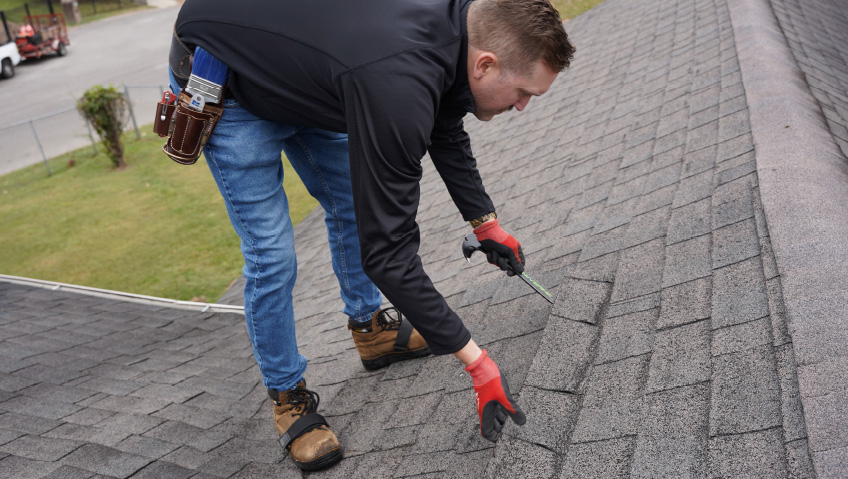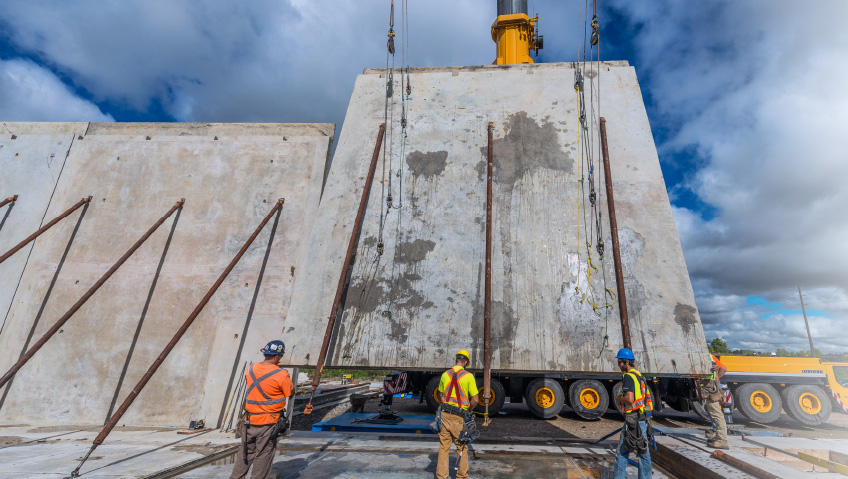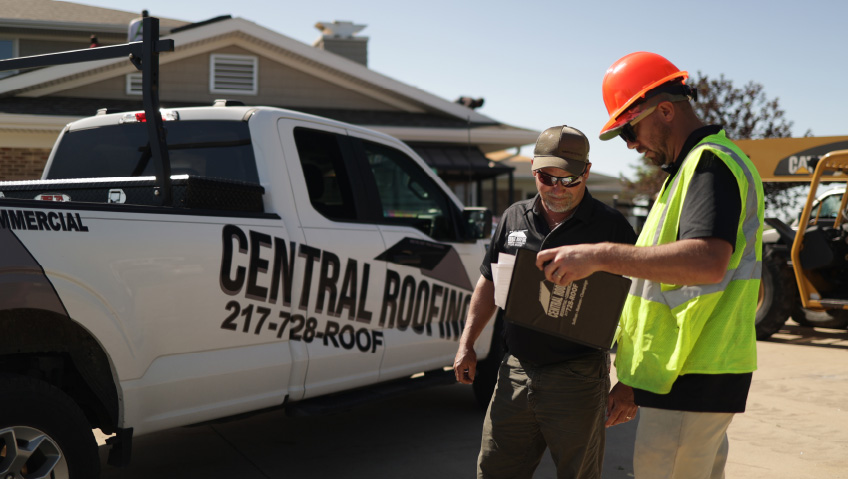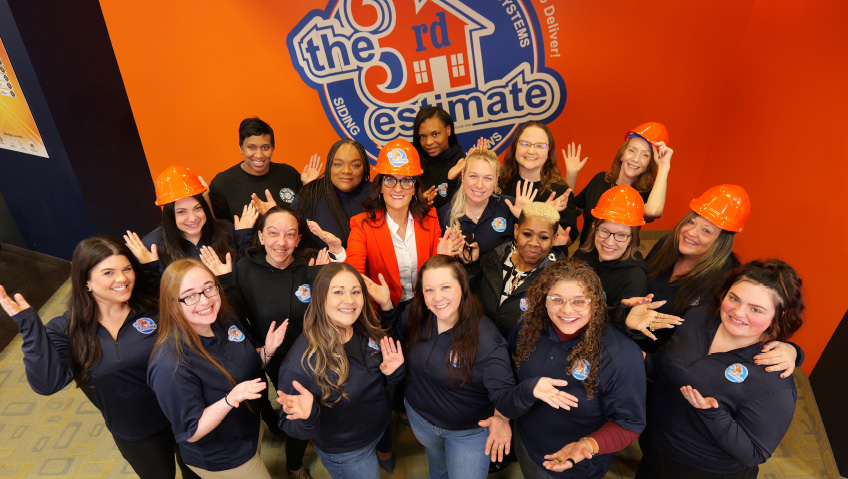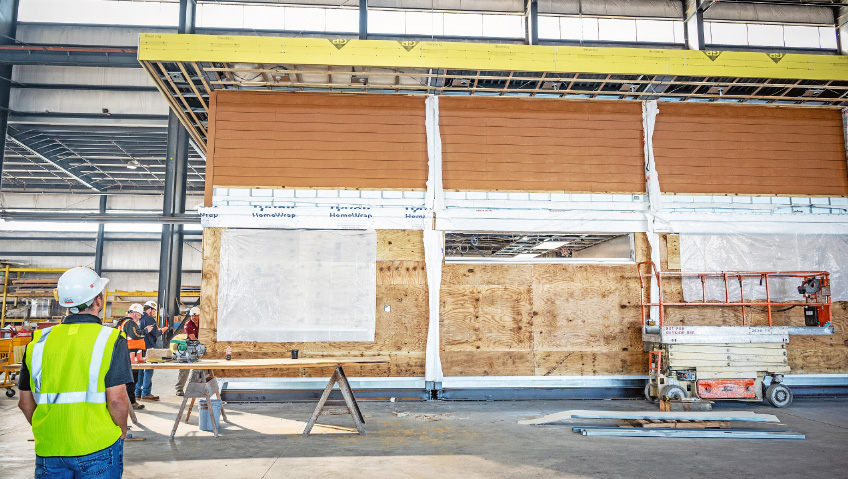CROM, headquartered in Gainesville, Florida, has been building and restoring essential water/wastewater infrastructures for municipalities and private clients for more than 70 years. “The company has remained a market leader in prestressed concrete tank design and construction since 1953,” says Director of Restorations and Field Operations, Bruce Russell, “and has continued to innovate and expand specialties to include infrastructure restoration.”
The company is built on a foundation that Ted Crom established when he launched the business. “He was a visionary for sure,” Russell says. “Ted had a matter-of-fact approach to business and often said, ‘this is the way we’re going to do what we do; we’re going to work safely. We’re going to build a quality product. We’re going to take care of our clients and our people, and we’ll be able to measure our success by the relationships we build,’” he explains.
“That’s the way he ran the company then, and that’s the way the company still is today.” Bruce Russell would know; he has been with the company for 40 years to witness this cause and effect firsthand.
“I think we remain the market leader because of our reputation for being a respected and experienced water/wastewater provider that designs and constructs durable and long-lasting quality tanks,” Superintendent, Kevin McKeown adds. “Everywhere we go, owners and engineers know CROM’s reputation and that it continues to reflect Ted’s vision. So we take pride in continuing to build that reputation.” CROM strives each day to further its reputation through a culture of performance and prioritizing execution of work safely and under the highest standard of quality, with purpose-driven efficiency.
One of CROM’s unique specialties is shotcrete. CROM has the distinction of being one of only 30 American Shotcrete Association (ASA)-qualified shotcrete contractors in advanced wet-mix. In 2021, CROM received the American Shotcrete Association Outstanding Project Award in Architecture/New Construction for a Decorative Shotcrete Acoustical Wave Wall roughly 110’ long horizontally, measured along the curvature and 70’ tall, located in the lobby of Steinmetz Hall in the Dr. Phillips Performing Arts Center in Orlando, Florida.
“The concrete industry has traditionally been cast-in-place, where forms are predominantly used, steel is tied, and mass wall sections or slabs are cast,” Russell says. But with shotcrete, “The slab is poured, and then the wall is constructed by applying very thin successive layers, one after the other, until the desired thickness/strength is obtained.”
There are obvious advantages to the shotcrete application method, including greater visibility into the construction process. “Engineers and inspectors appreciate this because they can see the result of each layer as it’s completed,” Russell says. “They can see the thickness; they can see the reinforcing bars as they’re being fully encased. Whereas, with a cast-in-place wall, once the forms are up and the steel is tied, they can look down and see that steel is there, but they have limited visibility as to how it was constructed.”
Greater strength, lower porosity, and longevity are also advantages of shotcrete. “Our water-to-cement ratios are much lower than cast-in-place concrete,” Russell says. “The lower the water-cement ratio, the more durable the concrete.” He was recently in a tank built in 1963 and observed that “the walls on that tank were just like the day they were built, just like the day they were shot.”
To achieve long-lasting strength, proper application of shotcrete is crucial; therefore, CROM ensures that its nozzlemen are fully certified by the American Concrete Institute (ACI) to best perform this work. “It is a tried-and-true method of application when it is applied correctly. That’s why we have the certifications we have for our nozzlemen—to maintain the highest standard of quality shotcrete,” Russell explains.
“I believe it’s a very important piece of our operation,” he summarizes, his perspective coming as an industry insider with decades of experience. “I’m on the board of directors for the American Shotcrete Association and have been a certified nozzleman since the certification’s inception. I’m a firm believer that our certified nozzlemen help separate us from any other contractor out there,” he continues. “The detail in our tank shop drawings says that all shotcrete must be placed by or under the direct supervision of an ACI-certified nozzleman. That holds a lot of weight in the shotcrete industry because of the qualifications and requirements to become a certified nozzleman and the subsequent maintenance of the certification. We are required to recertify every five years and therefore have established a program specifically for certification/recertification to achieve and maintain these credentials.”
With nearly 500 employees and five locations throughout the United States, CROM is strongly committed to a safety-first mentality. “The company is willing to do whatever it takes to provide a safe working environment for our team members,” says Safety Director, Herman Adams. “We expect them to work in a safe manner [and we] train them fully to do so. Their safety training starts day one of being with the company. The very first thing they do is sit down and complete modules of safety training specific to their position.”
In addition to new hires, CROM’s attention to safety extends to long-term employees as well and has cultivated a company culture that values communication. “If somebody feels unsafe, we stop. We talk about it,” Adams says. “We value team input… Sometimes our field crews think of things that we just do not, so getting everybody involved is a big part [of safety].”
CROM finds reasons to celebrate success. An employee or entire crew’s good safety record is one the company makes sure to acknowledge and reward. “We proudly recognize them—any accomplishments that they’ve achieved in the process of completing the job safely without any incident is something to celebrate,” Adams says. “That’s a big one for us. You can find us out celebrating as a team, sometimes in the form of a team dinner, hitting a few balls, attending a sporting event, or even a casual cookout. Any way we can show our appreciation for a job done safely and well.”
The company’s list of capabilities is comprehensive. CROM is a turnkey design/build firm with a 25-acre Job Servicing Facility with Logistics, Welding, Aluminum, Fiberglass, Lumber, Mechanics, Shoring, and Yard Departments where it supports the needs of its jobs and provides manufacturing and fabrication services. “We own our own equipment—our own air compressors, concrete pumps. It’s almost an anomaly nowadays for construction companies. Most places rent. The specific equipment that CROM uses is not sourced easily,” Russell says. “It’s very specialized. It’s not something you can go rent.”
CROM also has in-house Engineering, Drafting, Estimating, Bidding, Accounting, Marketing, and Procurement departments with experienced Subject Matter Experts and Licensed Professional Engineers (PE) and Structural Engineers (SE). Quality Assurance/Quality Control, Safety, and Training programs lead the way for continued efforts to ensure quality in products and services as well as experience and professional development through Advancement Programs, securing a strong investment in the company’s people and their future.
CROM has continued to be proactive and evolve with the times to thrive for seven decades. New regulations and methods have emerged over the years, and the company’s leadership has worked together to forecast and manage those challenges for clients. “We’ve always overcome challenges as a team,” Adams says. “We have meetings day in and day out. We work as a team, and I think that’s how we accomplish the most for CROM, building on everyone’s strengths.”
The company’s long history of success is at the forefront as CROM celebrates its 70th anniversary this year. The focus moving forward will be to continue along the path that Ted Crom set forth to pursue so many years ago now and continue to innovate and pioneer water infrastructure solutions for the ever-changing industry.
To continue in celebration, CROM has patent pending engineered and proven technology for CROM2 Straight Wall Watertight Tanks, with the same benefits of prestressed concrete tank technology, now with straight walls, an upgrade from the traditional cast-in-place structures.
“I’d like to see them have 70 more anniversaries, so I strive to pass down the traditions, high standards, and strong work ethic that I was taught when I first started here at CROM any opportunity I get so the legacy lives on,” McKeown says. “And that is a reason to celebrate.”


